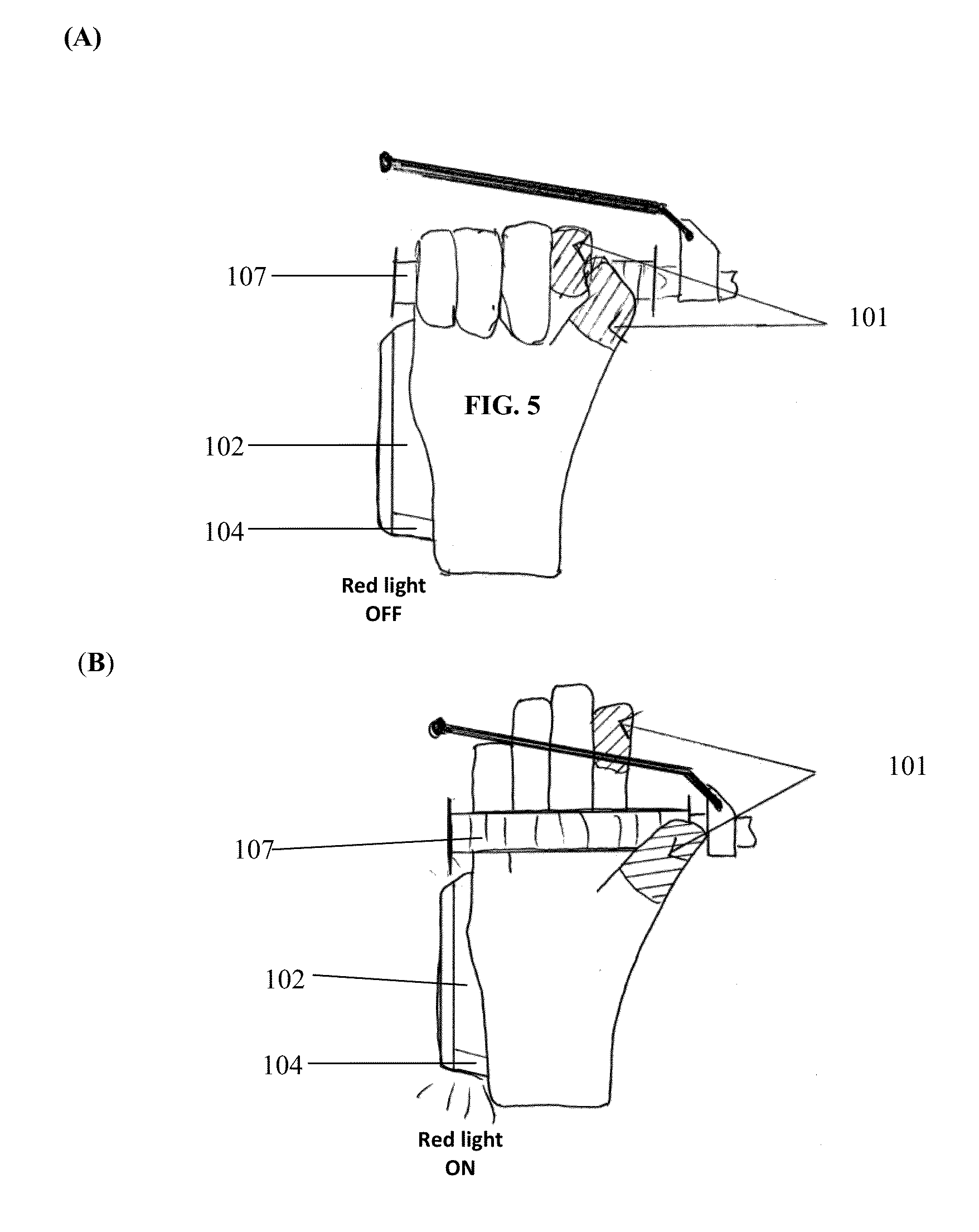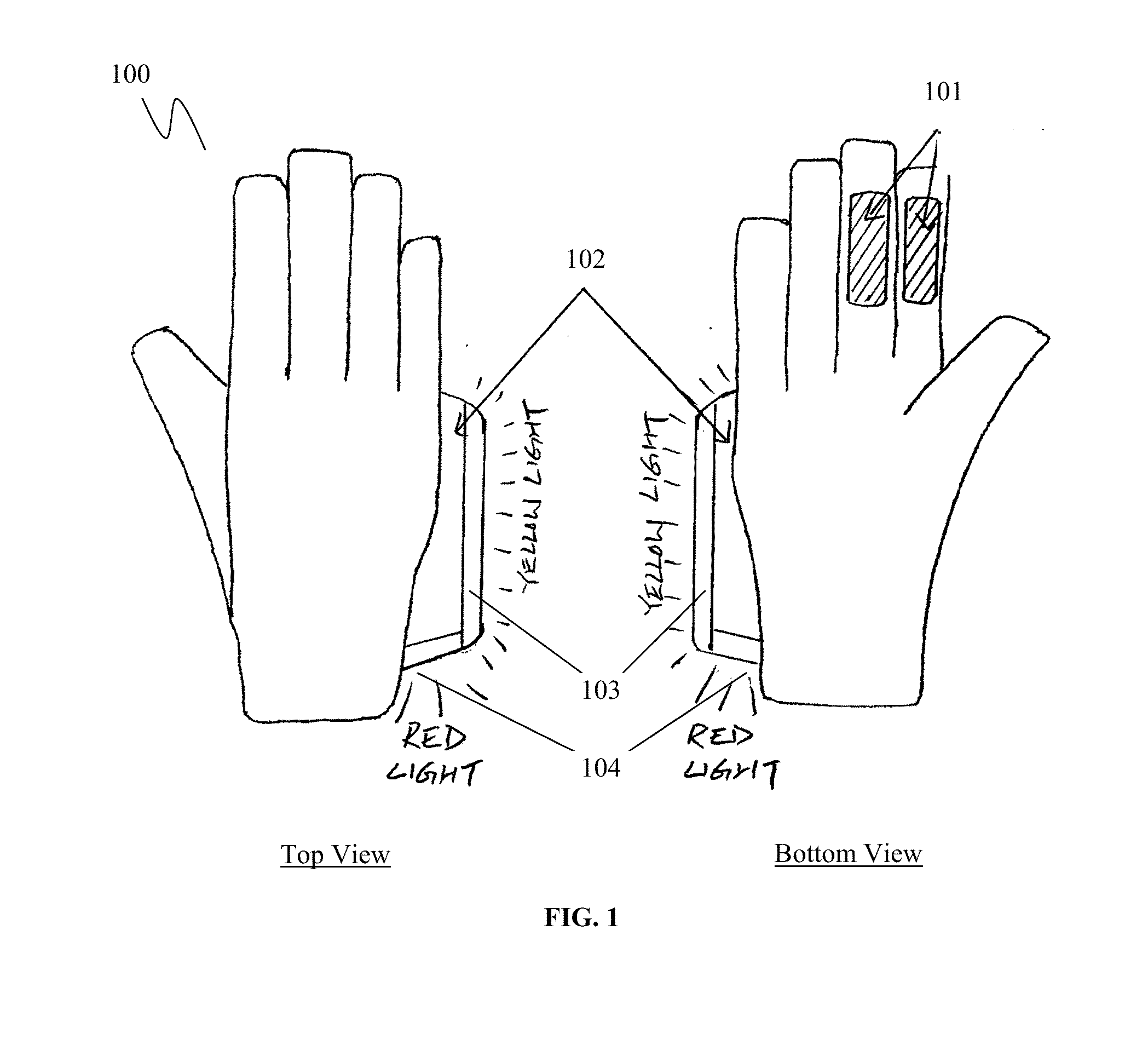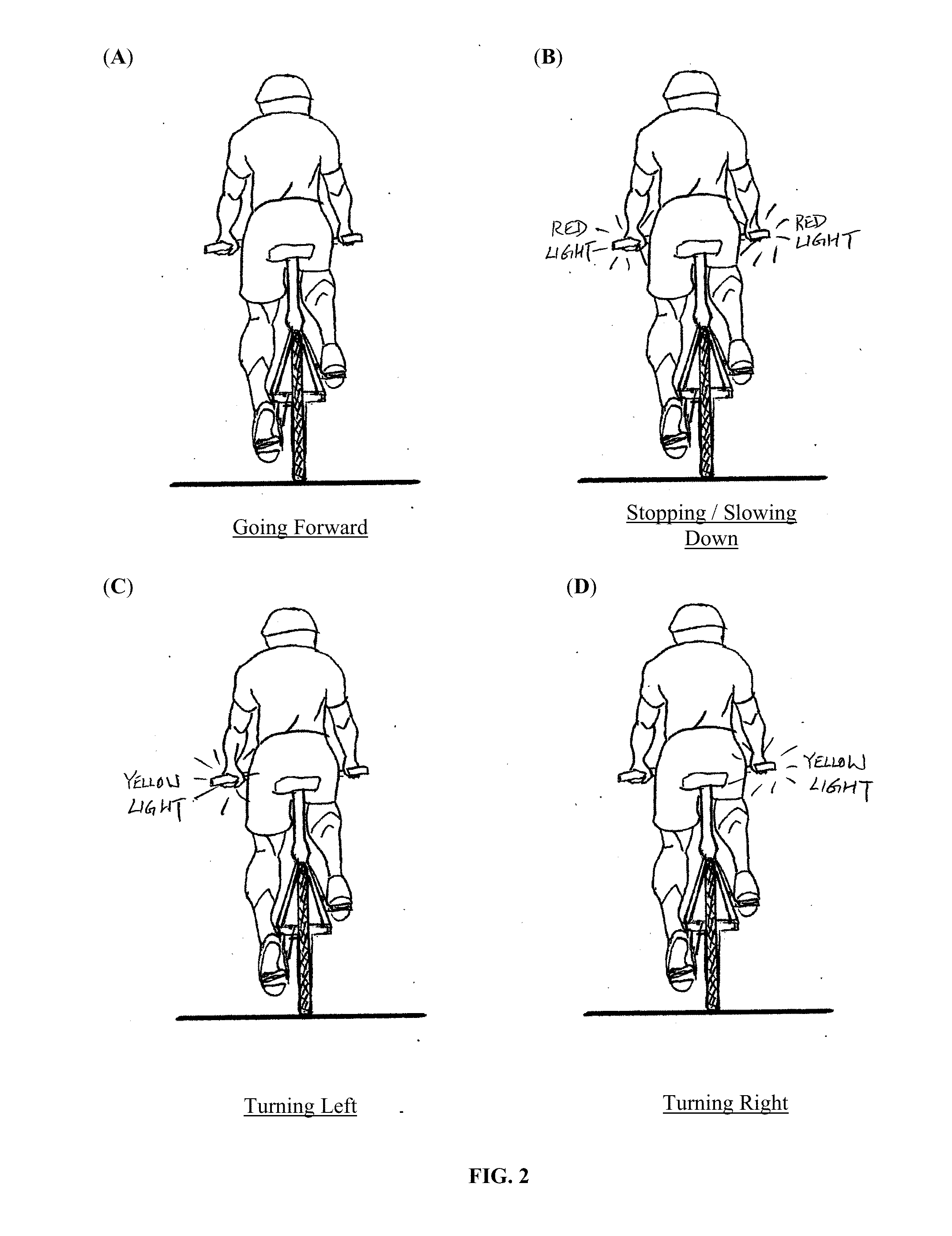Brake and Turn Signal Gear
a technology of signal gear and brake, applied in the field of signal gear, can solve the problems of difficult installation, inconvenient use, inaccurate, etc., and achieve the effect of convenient installation
- Summary
- Abstract
- Description
- Claims
- Application Information
AI Technical Summary
Benefits of technology
Problems solved by technology
Method used
Image
Examples
example 1
[0030]In FIG. 3A, the brake signal is off because the “switch” is opened by virtue of two points of electrical conductive material on two separate fingers of the BTG which are not in contact with the corresponding conductive material on the hand brake. The open circuit for the situation in FIG. 3A is illustrated in FIG. 3B. When the two points of electrical conductive material on two separate fingers of the BTG are in contact with the corresponding conductive material on the hand brake, as shown in FIG. 3C, the circuit of the brake signal which is a red light signal is closed, as shown in the schematic diagram of FIG. 3D. In this situation, the red light is on to notify other road users that the bicycle is intended to either stop or slow down. Although the two points of electrical conductive material are attached onto the index and middle fingers respectively in this example, it should be understood that the conductive material is not limited to be attached to these two fingers. The...
example 2
[0031]In FIG. 4, the conductive material covers the thumb and index finger of the BTG. The signaling component of the BTG also includes a turn signal (103) and brake signal (104). In this example, when the conductive material on the index finger is in contact with the conductive material on the thumb, the brake signal is off (FIG. 5A). On the other hand, when they are not in contact, brake signal is on (FIG. 5B). A relay switch circuit with normally-closed (NC) contacts is incorporated into the BTG. The relay switch circuit controls the on / off of the signal component, so that when the “switch” circuit is closed, the signal component is off. When the “switch” circuit is opened, the signal component is on. In this example, when the cyclist holds the handle bar 107 with his / her index finger touching the thumb, the conductive material 101 on those fingers will be in contact, the brake light 104 will be turned off (FIG. 5A). When the cyclist prepares to slow down or brake, he / she can rel...
example 3
[0032]FIG. 6 illustrates that the brake light 104 is operated by two pieces of conductive material 101 that are attached to bottom side of both index and middle finger. When the cyclist holds the conductive handle bar 107 with both index and middle fingers, the brake light 104 is turned off (FIG. 7A). It is controlled by the relay switch circuit with normally-closed (NC) contacts inside the battery compartment 102. When the cyclist prepares to slow down or to brake, he / she may release their fingers from the conductive handle bar 107, or then further holding the non-conductive hand brake with their fingers. In these situations, the conductive material between the index finger and middle finger are not in contact, and as such the brake light 104 is turned on (FIG. 7B).
PUM
 Login to View More
Login to View More Abstract
Description
Claims
Application Information
 Login to View More
Login to View More - R&D
- Intellectual Property
- Life Sciences
- Materials
- Tech Scout
- Unparalleled Data Quality
- Higher Quality Content
- 60% Fewer Hallucinations
Browse by: Latest US Patents, China's latest patents, Technical Efficacy Thesaurus, Application Domain, Technology Topic, Popular Technical Reports.
© 2025 PatSnap. All rights reserved.Legal|Privacy policy|Modern Slavery Act Transparency Statement|Sitemap|About US| Contact US: help@patsnap.com



